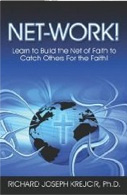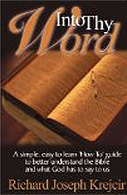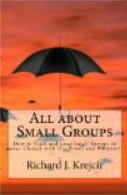Some of these are grouped in categories. But most of the terms and explanations are listed in alphabetical order.
Apostle- Sent out one, specifically chosen by Christ. There were 2 main categories and as many as 5. Those who were with Jesus from the time of John the baptist and witnessed his resurrection. (Acts 1:21-26) Another were seeing the risen Christ as in the case of Paul and others who were sent out as church missionaries.
Bible- Biblios (scroll or book) Scripture-The Old Testament consists of the law (revealed by God through his servant Moses, the prophets and the writings. Which are written in Hebrew with few parts in Aramaic.
The law (revealed by God through Moses from
The N T. consists of the gospel accounts, epistles and letters written in koine (common) Greek . these were written from approximately A.D 40 to 95 by eyewitnesses or one who interviewed an eyewitness (Luke). 27 books in all by 9 different authors. Christ had risen approximately 30-32 Ad , they waited for 10 years because they anticipated his return. Once the Church was being persecuted it became necessary to write the accounts down. Letters were then written to where the church met and were read aloud. They were then copied and shared by circulation. This copying protected them from being lost. They were copied in hearing rooms and were checked. If a parchment wore out it was destroyed.
Literary content
Gospels are biographical accounts each having a specific theme- written to both unbelievers and believers.
Matthew-Jesus the Messiah the king of the Jews
Mark- Jesus the Messiah the Servant of Yahweh
Luke- Jesus the Messiah the Son of Man
John- Jesus the Messiah the Son of God
Book of the Acts of the Apostles is Church history (following specifically Peter to the Jews, and Paul to the gentiles). It is the deeds of the apostles as they conduct Church government and spread the message of the gospel. Written to believers, to those who have already heard so they can have a fuller understanding of the truth.
Epistles letters- Consists of doctrinal teachings and practices and refuting error.
All other letters are personal- 1 and 2 Timothy, Philemon, 2nd & 3rd John.
Both the OT and NT are 66 books written spanning over 60 generations from 6 different parts of the world. Written by people from all walks of life. Kings, priests, prophets, soldiers, shepherds, fisherman, doctor, tax collector, a tent maker and farmer, all which are in agreement on who God is and the nature of man.
The scripture is diverse literary forms. Historical, narratives, biographical, in poetry, drama, songs, and letters.
Revelation -Is apocalyptic written in symbolism describing literal events. Much of what is spoken of in the O T for
Q-Quelle- which means source. A hypothetical document that is believed to be the common source for the gospels.
Three terms used to describe the gathering together of the canon (Scripture)
Homologumena= all books accepted by the entire church (the Pauline epistles next were the 4 gospels in one work, then Acts 1 Pt., 1 Jn., Revelation all these were accepted in both the East and the West).
Antilogumena= books accepted by some of the church (James and Jude, 2nd and 3rd John, 2nd Peter, Hebrews which were disputed books because they were not familiar with them these 6 books were accepted later).
Notha= writings claiming inspiration but were false.Their were false books circulating by authors who claimed to be an apostle or penned an apostles name. They were considered false because it contradicted the writings previously delivered Ex: The 1st miracle of Jesus was that he did miracles as a boy .
Bible- John Wycliff in 1400 AD., made the bible in the language of the people in
Voltaire the French philosopher boldly declared, 50 years from now the world will hear no more about the bible. Exactly 50 years later the
Church- Who owns the Church 2 Thess 2:7 It is called the
Covenants- A covenant is an agreement between 2 parties, one is God the other man. There are two different types of agreements in scripture. Conditional and unconditional.
Conditional - base on man keeping the agreement by cooperation. If you will I will.
Unconditional.-Is based on Gods promise by him fulfilling his part. I will even if you disobey .
Covenants in sequential order (most recognize there are only two basic covenants, the mosaic and the New covenant)
Edenic covenant conditional Gen.2:15-17 resulted in spiritual death.
Adamic covenant-conditional Gen.3:14-21 resulted in physical death.
Noahic covenant-Unconditional Gen.9:1-19 still in effect resulted in worldwide flood.rainbow as the seal or token.
Abrahamic covenant- Uncondional Gen.12:1-3 to Abraham for
Mosaic covenant-Conditional Ex.19:3-8 Between God and
Land covenant-Unconditional Deut.29:10-15 30:11-20 God gave to
Davidic covenant-Unconditional 2 Sam.7:4-17 seed of David. 1 Chron. 17 : 10-1,4 still in effect.
New covenant - Jer.31:31 - Karnei Diatheke the last will and testament. based on the blood of Christ .The revelation of the holiness of God in the righteous son who empowers those who receive him to become sons of God Jn.1:12 Heb.8:7 Gal.3:19 'until the seed should come' which is Christ.
The Cross- First known practice of crucifixion was by the Persians. Alexander and his generals brought it back to the Mediterranean world - to
In the summer of 1968 a team of archaeologists discovered four Jewish tombs near
Decree- Gods eternal purpose according to the council of his will, whereby for his own glory he foreordained what is to come to pass. Some things God proposes to do others he decrees. Permitting them to be done he affects good and permits evil. So he is in control of both yet he is not the author of evil.
Disciple- a learner or follower of Christ (not always a believer) Jn.6, Jesus wanted saved disciples, to pick up their cross and follow in his footsteps.
Doctrine- The teachings of scripture 1 Tim.4:13-16 2 Tim.3:16 (fundamentals, practices of )
Effacacious- Gods sovereign work to effectively call people to salvation through the conviction of the Holy Spirit.
Glorification- to become like Jesus at either the rapture of the Church, or at preceding resurrections. (to become immortal and incorruptible in a permanent state)Rom.8:17; Phil.3:20-21; 1 Cor.15:42-44,49-54
God- One true God, eternal transcendent apart from anything made. Has plurality within his nature as 3 identities simultaneously existing (persons) who are united in the one essence that is God.
The Gospel-means good news referring to the message of reconciliation to God for those who are sinners. Rom.10 1 Cor.15:1-4
Grace- The undeserved favor bestowed upon sinners, a gift from God giving us Christ's riches which we do not deserve nor can earn. Eph.2:8-10
Hypostatic union- The dual nature of Christ being both 100%God and 100% man dwelling together as one person. Jn.1:14,18 Phil.2:6-8, Isa.9:6 Heb.4, Col.2:9
Incarnation-God becoming flesh the eternal Son who is God (the word) becoming the son of man through the virgin conception. Mt.1:21-23;Isa.7:14
Impute- To place on ones account Christ's righteousness in exchange for our sin.
Scriptural Interpretations
Exegesis- to draw out extracting what is in the text the way it was written. Finding the true meaning and explain the passages of scripture from their context
figurative language- the moon turns to blood (meaning red). look for the literal meaning first before attempting to interpret it as symbolic.
Hermeneutics-The science of interpreting the written word, to find what the text actually meant. What God originally meant it to say. Eliminating what it never could have meant. This includes the whole field of interpretation. The use of tools such as a different bibles (word for word translations and paraphrase), bible dictionaries, interlinear, Greek word pictures and tenses, Concordance,etc.
Hyperbole- Ps.119:20 My soul is crushed with longing. Luke
Idiom- an expression of language or dialect of a people that is not understood outside its culture. A special terminology.
Isogesis-Reading into a text what isn't there. Interpreting it by different rules than a consistent understanding from the Bible. Using a presupposition to arrive at the meaning, by ignoring the language and culture it was used in.
Metaphor- Jn.6:48 I am the bread of life or eat my body and drink my blood- a figure of speech in which one object is liked to another by speaking of it as if it were the other but in fact is not.
Parable- A figure of speech in a story setting to illustrate a moral or spiritual or heavenly truth. Taken from the peoples everyday experiences. Mt.13 The disciples asked why do you speak in parables. It has been to you to know the mysteries of the kingdom of heaven, but to them it has not been given . The principle is (Isa. 6:9-10) to reveal to those who are soft in heart seeking truth , they will continue to be given more . For those who are hard of heart it is hidden until they repent. In Mk.4:13 Jesus explains In understanding this first parable of the sower is the key to understanding them all.
Simile- Rev.1:14 "His eyes were like flames of fire." A figure of speech expressing comparison or likeness, terms such as like, as ,so. ____________________
Inerrant- the teaching of the Scriptures which are free without error, in doctrine, historicity, geographical and science, etc. God breathed C. Hodge- the language expressed the thought God intended to convey with infallible accuracy so that the words as well as the thoughts are Gods revelation to us.
Inspiration-The activity of the Holy Spirit which superintended the writers of scripture to convey what God has said. Using their personalities and styles. Theopneustos-God breathed. 2 Tim.3:16 God's authoritative self-revelation through man.
Israel- Was found in Gen.12:2-3.beginning with Abraham "And I will make of thee [Abraham] a great nation, and I will bless thee, and make thy name great; and thou shalt be a blessing. And I will bless them that bless thee, and curse him that curseth thee: and in thee shall all families of the earth be blessed . From Jacob came the 12 tribes Hebrew tribes, descended from 12 sons of the patriarch Jacob: Asher, Benjamin, Dan, Gad, Issachar,
The word
Jewish-Jew comes from
A Hellenistic Jew followed the Greek culture. More modern meanings attribute it to members of the Hebrew tribe of
Justice- Getting what you deserve from Gods hands, a righteous perfect judgement, rewards and punishments. 2Cor.5:10; Rev.20:11-12
Justification- a legal declaration giving one right standing before God pronouncing a sinner righteous because of Christ's merit,(not making them righteous)Ro.5:1,18 Isa.53:11 Rom.4:5
Kenosis- The voluntary emptying of Christ by him taking on an additional nature while not setting aside his divine nature and attributes became a servant obedient to the Father. Phil.2:5-8; Jn.1:14
Law of Moses- Considered a unit of 613 laws. civil, ceremonial, moral all interconnected. Its purpose was to reveal God's holiness; The law was made to increase sin Rom. 7:9-11. 1 Cor.15: the strength of sin is the law." To expose the sinfulness of man and to make man sin more Rom.
Man- A direct creation of God. Made in his image to express God nature and bring glory to his creator. Specifically to have a relationship with God as a child to its parent.Created in holiness knowing only what is good until the fall, then gained knowledge of what is contrary to God.
Masoretic text- Before 1947 the oldest Hebrew manuscript was the Masoretic dating to 900 AD. The
Mercy-Is withheld punishment for judgement,Gods mercy provides the need for sinful man in Jesus sacrifice.
Millennialism
Millenium- A literal 1,000 years of Christ reigning on earth.(Gr. Chiliasm=1,000 years, mentioned 6 times) The church was pre millennial the first three centuries of the church. His return was considered imminent.
Amillennialism- Teaches there is no literal millennium before or after Christ returns to earth. Uses a allegorical or symbolic approach to prophecy. (major proponents are Covenant theologians)
Dispensational pre-millennialism- The 2nd coming occurs in two stages first the rapture of the church then after 7 years Christ returns with his church to rule on earth. Uses a literal interpretation of prophecy.( used by pretribualtionists)
Historic pre-millennialism-The rapture and the 2nd coming are simultaneous events as Christ returns to earth, before the millennium.
Post milleniallism-Christ returns after the millennium, there is no distinction between the rapture and 2nd coming, it one event. _______________________
Motif- The underlying theme or the main element in a literary work.(held by many covenant theologians and reconstructionists)
Pharisees-keepers of the written law. They believed in angels demons and the afterlife Mt.7 They were the pious and added many laws to Gods law giving priority to their laws over what God had said.
Providence- God working all things to the purpose of his will Isa.40:28; Ps.139:13; Rom.8:28
The Rapture- The resurrection of the saints and those who are alive when Christ comes for his church are simultaneously taken up and changed to immortality.1 Cor.15:51-52 ;1 Thess.4:16-17
Redemption- to buy back out of slavery of sin. One is liberated from sin being their master because of the complete payment of Christ's blood. Gal.3:3; Eph.1:1;Rom.3:24-25
Reconciliation-To make man who was once an enemy of God have peace through Christ's atoning death . A change of relationship between God to man from hostility to harmony. Reconciliation does not necessarily equate salvation, it renders all men savable. Rom.5:11; Col.1:20-21; 2 Cor.5:18
Regeneration-the new birth by the Spirit-implanting of the divine nature by the word of God, and will of God and Spirit of God through faith 1 Pt.1:23; Titus 3:4, Jn.3:5; Rom.10:17; Eph.3:17.
Saducee's- A group of Jews that held to a strict literal interpretation of then laws of Moses and used only the first 5 books of Moses. They rejected the supernatural, angels and demons and the afterlife. They had control of the temple and the priesthood in Jesus day. Mt.22:23-33
Sanctification- ( to be set apart) holy-Anything set apart for Gods use can be sanctified Days.Gen.2:3, places and things. The progressive work of the holy Spirit in a (saints)believers life conforming them to the image of the son . 2 Thess.2:13 Phil.2:13 . sanctify is used in numerous forms in the O.T. 106 times and 31 times in the N.T.. Holy is used 12 times in the N.T of believers. The word saint is used of
Salvation-To believe the Gospel by faith and be born a new by a spiritual birth Jn.3:5-8; Eph.1:13,
Sanhedrin- A group of 70 men who were a religious political body for
Scribes- copiers of the law ( a branch of the Pharisees. They were responsible for safeguarding and copying the scripture. They wrote mainly on parchment which consisted of dried up and polished skins of calves and sheep rolled up into scrolls. They had a meticulous Job of cross-checking the letters for any mistakes. Each letter was to be a hair breath away from the next. They would have counters to count all the words to see if there were any mistakes.If they found an error the scroll was completely destroyed. They had memorized immense portions of the O.T. scripture and often argued with Jesus on its meaning.
Shekinah glory- A physical manifestation of God as a cloud, light, fire or darkness . It is not God himself, but when it appeared, he would often be within it. Ex.3:5,
Sin- Transgression of the law, to violate Gods perfect standard or a command given. A moral inclination to do evil to go against ones conscience. The source of sin is inside us, our fallen nature Rom. 5:13-14 explains sin was in man and the world before the commandments.
Theophany- A physical manifestation of God as a person or messenger (angel) a pre incarnate appearance of Christ in human form, called "the Angel of the Lord." Gen.16:13, 17:1-3,18:1, 32:30; Ex.3:2
Eschatology
The Great Tribualtion- The time Jesus warned of as Jacobs trouble Jer.30:7, the ending of the age. Book of Revelation 6-19 and part of Mt. 24 and 25. 70th week of Daniel Dan. 9:27, day of the Lord. 1 Thess.5:2.
Preterism-fulfilled eschatology- belief that the date 70 AD all was fulfilled that Jesus spoke of in Mt.24
The Tribulation teaching is in reference to the rapture and resurrection of the saints
Pretribulationist- believe that the Church will not go through the tribulation but will be raptured away to heaven and the tribulation is specifically to break the will of Israel and save them as a nation .also to have the world repent in the judgements found in the book of Revelation.
Mid- tribualtion- a mid 70th week rapture. The church will be taken out before the great tribualtion occurs which is when the antichrist goes into the temple and declares himself God approximately 1,260 days before Christ comes back.
Partial rapture-Only those who are watching and waiting, making themselves prepared will go.
Pre- wrath- A ¾ view which has the church go through much of the tribulation to purify and perfect the bride.
Post-tribualtion- Christ comes back at the end of the tribulation and those who are alive through it are raptured. There are 4 views within this position as well. Classic, semi-classic, futurist, dispensational.
Vicarious- to take a place of another as a substitution. Jesus took the place of sinners place vicariously on the cross. Mt.20:28













